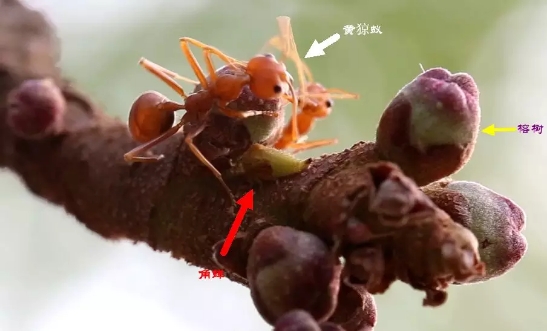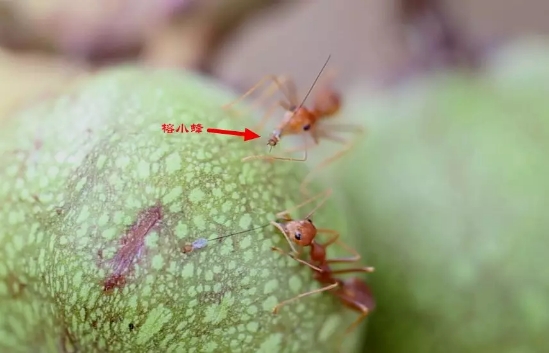Different types of mutualisms may interact, co-evolve and form complex networks of interdependences, but how species interact in networks of a mutualistic community and maintain its stability remains unclear.
Weaver ants often build leaf nests on fig trees. It has been frequently reported that chemical resemblance (mimicry or camouflage) can manipulate ant behavior to favor many species of phytophagous insect mutualists, making them less likely to be preyed on by the ants.
Researchers from Xishuangbanna Tropical Botanical Garden (XTBG) and their cooperators used a weaver ant-treehopper mutualism associated with the fig tree species Ficus racemosa in Xishuangbanna to test if the behaviors of the ants are affected by chemical signals given by treehopper mutualisms. They hypothesized that chemical signals produced by the treehoppers may manipulate the behavior of the ants in their favor and thus help maintain the stability of this system
They found that the cuticular hydrocarbons of the treehoppers are more similar to the surface chemical profiles of fig inflorescence branches (FIB) than the cuticular hydrocarbons of the fig wasps. The cuticular hydrocarbons of treehoppers on one hand attract mutualistic weaver ants, but on the other hand help protect the treehoppers from ant predation even in the absence of honeydew rewards.
Cuticular chemicals from treehoppers and fig inflorescences both attract weaver ants, which may reflect a long history of co-evolution among the three species.
Further behavioral experiments provide evidence that chemical extracts from both treehoppers and fig inflorescence branches can independently protect treehopper nymphs from ant predation when honeydew is absent.
In the field, an abundance of ant-treehopper mutualists has positive effects on the production of pollinating fig wasps and seeds, probably via weaver ant predation on the ovipositing non-pollinating fig wasps ( NPFWs) that oviposit on the outer surface of figs. Thus, weaver ants probably have an important function in that mutualistic network.
The results imply that in the mutualistic network chemical camouflage (i.e. the simulation of the general background ) plays a decisive role in regulating the behavior of a key species and indirectly shaping the architecture of complex arthropod-plant interactions.


